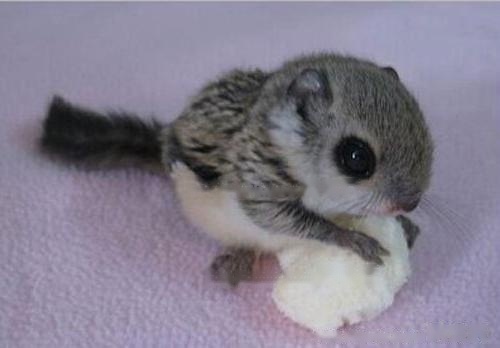The Japanese flying squirrel is an omnivorous animal that likes to eat plants. As a pet consider feeding some fruit and squirrel feed. Occasionally feed some animal food. Let's learn about the breeding knowledge and living environment related to raising Japanese flying squirrels.

Japanese flying squirrel
Feeding knowledge:
The feed can be fed with pine nuts, hazelnuts, melon seeds, sunflowers, pears, apples, etc. According to the season and different regions, as many feeds as possible are provided for them to choose. Feed can be placed in several places to prevent them from competing. Dry feed can be added once every 2 to 3 days. There should be clean water in the basin at all times.
The key points about the breeding technology of Japanese flying squirrels When introducing animals, the ones with strong physique must be selected for breeding, and the ratio of male and female can be 3-4:1. Single out frail males, especially frail males, who may be attacked by other males. During the breeding season, you can give some animal food, such as boiled eggs, bread, etc., to see if they like it. In addition, put some clean dead leaves, broken hemp, twigs, etc. in the circle for them to nest or build nests. Cubs born half a year old should be kept separately to avoid excessive density.
Living environment:
The Japanese flying squirrel likes to inhabit high mountains and dense forests in the wild, and is a typical nocturnal animal. If it is raised at home, it is best to keep it indoors or outdoors with a roof in the hot summer, and it is best to spray water to cool down when it is too high. No protective measures are required in winter.
The Japanese flying squirrel is very lively, especially likes to climb trees, the activity space is more three-dimensional, and a wide and high cage should be used as much as possible. Since Japanese flying squirrels are accustomed to nesting in trees, the nest box should be installed high in the cage. The nest box can be replaced by a nest box with a high entrance and exit for small birds. The Japanese flying squirrel moves very quickly, so be careful when opening and closing the door to avoid escaping. In case of escape, if you grab it suddenly and forcefully, you must avoid being bitten by the Japanese flying squirrel.
The house where Japanese flying squirrels are generally required to choose a southeast direction, warm in winter and cool in summer, and a place with a certain amount of light, which is beneficial to animal health. Animal houses and cages should conform to the living habits of animals. The house for keeping Japanese flying squirrels can be made of iron wire or wooden planks, and the area should be appropriately larger. When rearing in a single cage, the size of the outer cage can be 60X25X45 cm, or a double-layer cage with a size of 55X45X45 cm can be used as a place for mating during feeding, drinking, exercise and reproduction.
The periphery and top of the outer cage can be woven with iron wire, the mesh size is 4-3.5 cm, and the bottom of the cage can be woven with thicker wire; the sides and back can also be replaced by glass or iron sheet, Equipped with small doors to allow animals to enter and exit or clean up, or put food and water. In addition to the outer cage, there should also be a nest box for its habitat, rest and birthing place; the nest box can be made of 1.5-2.0 cm thick wooden board nails, and its length, width and height are 30X25X25 cm or 45X35X45 cm . The outer cage can be installed together with the nest box; it can also be placed separately, allowing the Japanese flying squirrel to come and go freely.
![[Dog Training 5] The training method of pet dog dining etiquette](/static/img/12192/12192_1.jpg)




